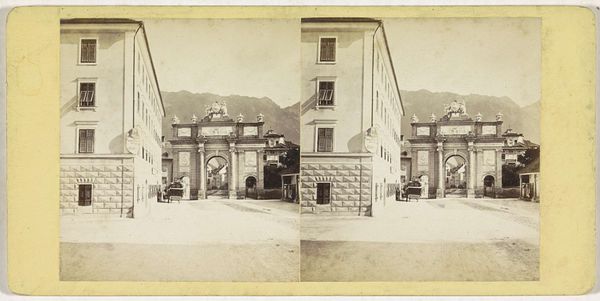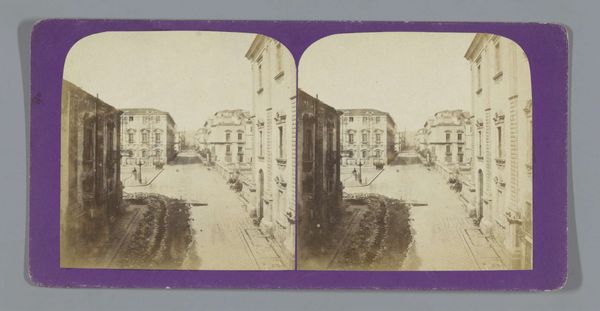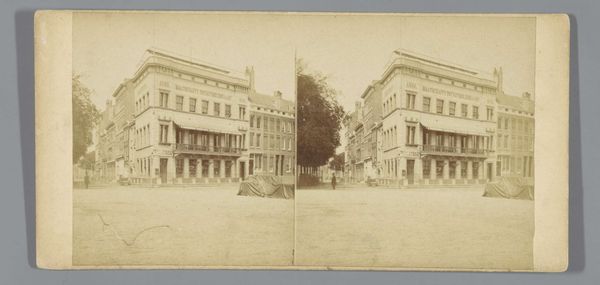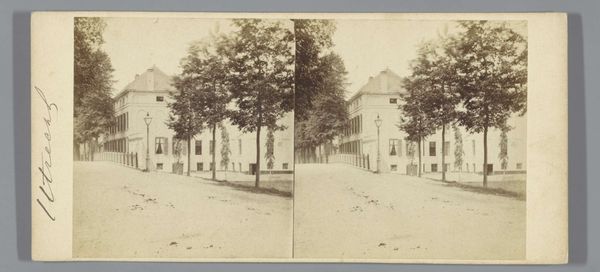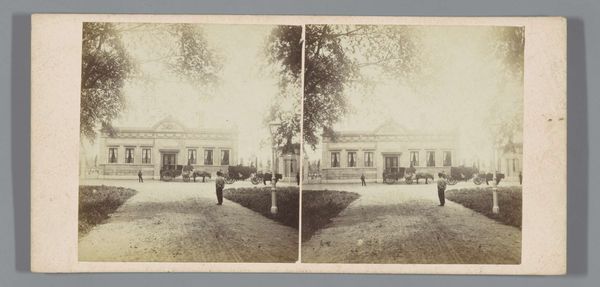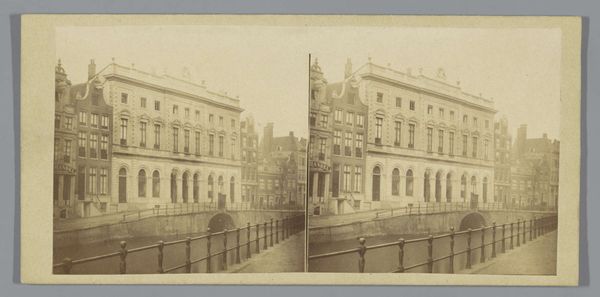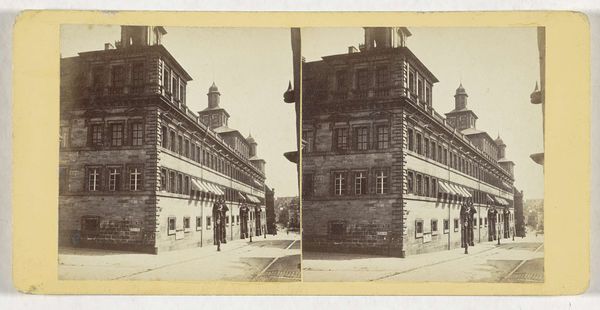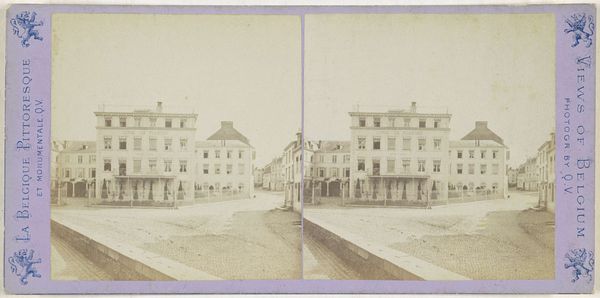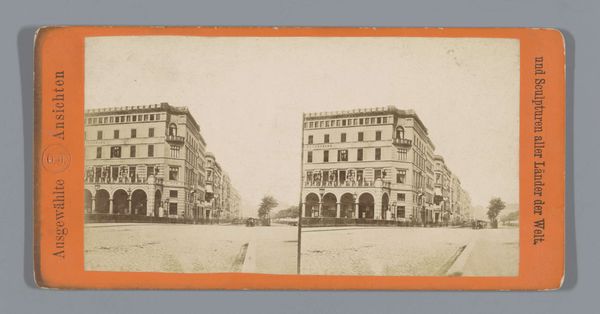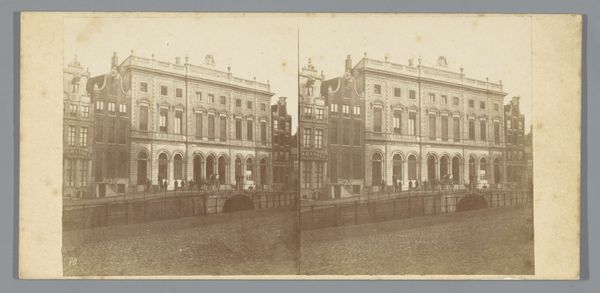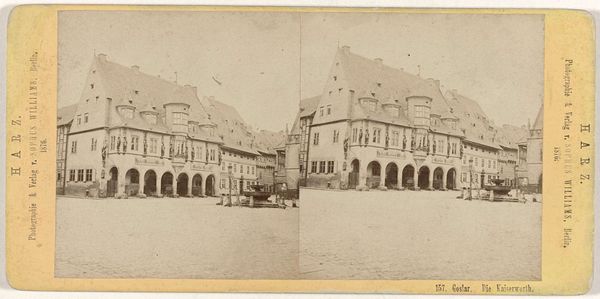
print, photography, albumen-print, architecture
#
16_19th-century
# print
#
photography
#
cityscape
#
albumen-print
#
architecture
#
realism
#
building
Dimensions: height 85 mm, width 170 mm
Copyright: Rijks Museum: Open Domain
Editor: So, we're looking at "Binnenhof te Bad Wildbad," an albumen print photograph from around 1860-1865 by L. Meder, housed here at the Rijksmuseum. It’s a detailed cityscape, very still and quiet. What story does this image tell you? Curator: Well, seeing this, I immediately think about the rise of tourism and leisure culture in the mid-19th century. Photography played a key role in shaping and promoting these destinations. The seemingly objective nature of photography lent credibility to the allure of these resort towns like Bad Wildbad. This image served to legitimize it, didn’t it? Editor: Legitimize? How so? Curator: It presented an ordered, almost idyllic scene. Look at the meticulously rendered architecture, the implied cleanliness, the carefully posed figures. It creates an impression of respectability and relaxation, which was vital for attracting a particular class of clientele and shaping the image of Bad Wildbad as a destination. Editor: So it’s less about purely documenting the place and more about creating a specific *idea* of it for consumption? Curator: Precisely! The very act of framing the view, choosing the angle, controlling the exposure… it’s all about crafting a narrative. Consider the social implications; who could afford to travel, and who were these images targeted towards? Editor: That’s a really interesting point. I hadn't considered how photography, even in its early days, was already deeply intertwined with social status and the promotion of specific cultural experiences. Thanks for highlighting that. Curator: My pleasure. It's crucial to remember art, even what appears to be a simple photograph, never exists in a vacuum. It’s always part of a bigger social and political story.
Comments
No comments
Be the first to comment and join the conversation on the ultimate creative platform.
